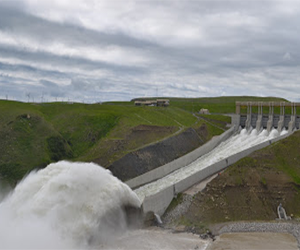The Reynolds number of a fluid is a dimensionless constant which allows you to determine whether the flow of a fluid is laminar or turbulent. It represents the ratio of inertial forces to viscous forces in the fluid.
$latex R_e = \frac{inertial forces}{viscous forces}&s=2$
The equation is:
$latex R_e = \frac{D_ev}{\upsilon}&s=2$
Where:
De = Hydraulic Diameter (ft or m)
v = velocity of the fluid (ft/s or m/s)
υ = kinematic viscosity of the fluid (ft2/s or m2/s)
The Reynolds number allows one to determine whether the flow is laminar, turbulent, or within the transition zone between the two.
- Laminar: Less than 2100
- Transition: 2100 to 4000
- Turbulent: Greater than 4000
Laminar flow is flow in a straight line, i.e. If all of the particles are moving parallel, it is perfectly laminar.
If the absolute viscosity is known
If you know the absolute, instead of the kinematic, viscosity of the fluid, you can revise the Reynolds equation to accomodate:
$latex R_e = \frac{D_ev\rho}{\upsilon \mu}&s=2$
This is a simple conversion from the kinematic viscosity equation:
$latex \upsilon = \frac{\mu}{\rho}&s=2$
If the mass flow rate is known
Sometimes you might know the mass flow rate per unit area, G = ρv. In this case, the Reynolds number equation can also be modified to accomodate:
$latex R_e = \frac{D_eG}{\mu}&s=2$

Speak Your Mind